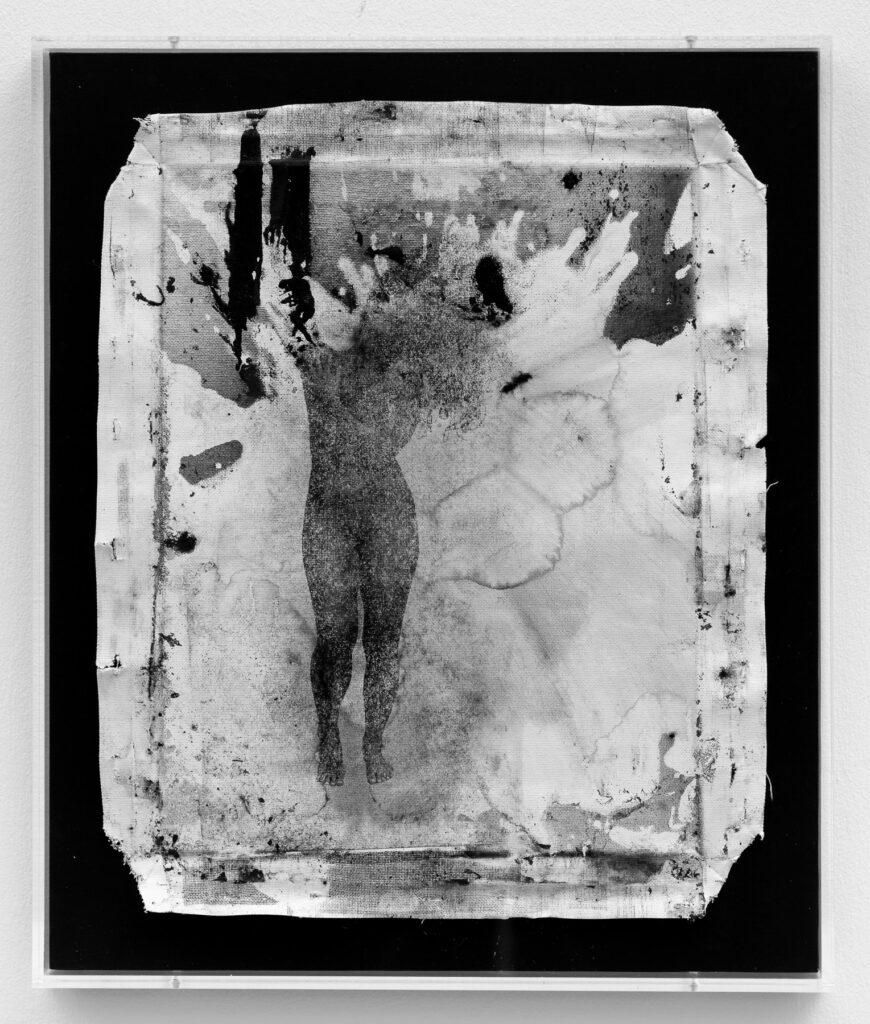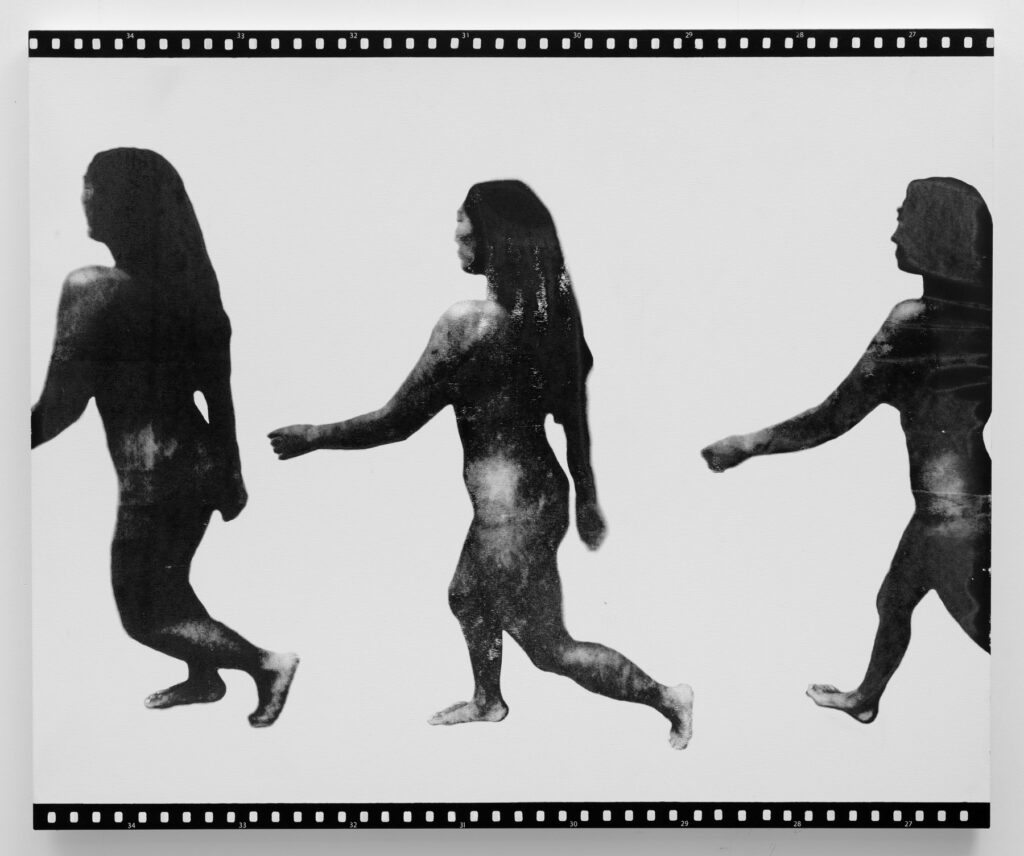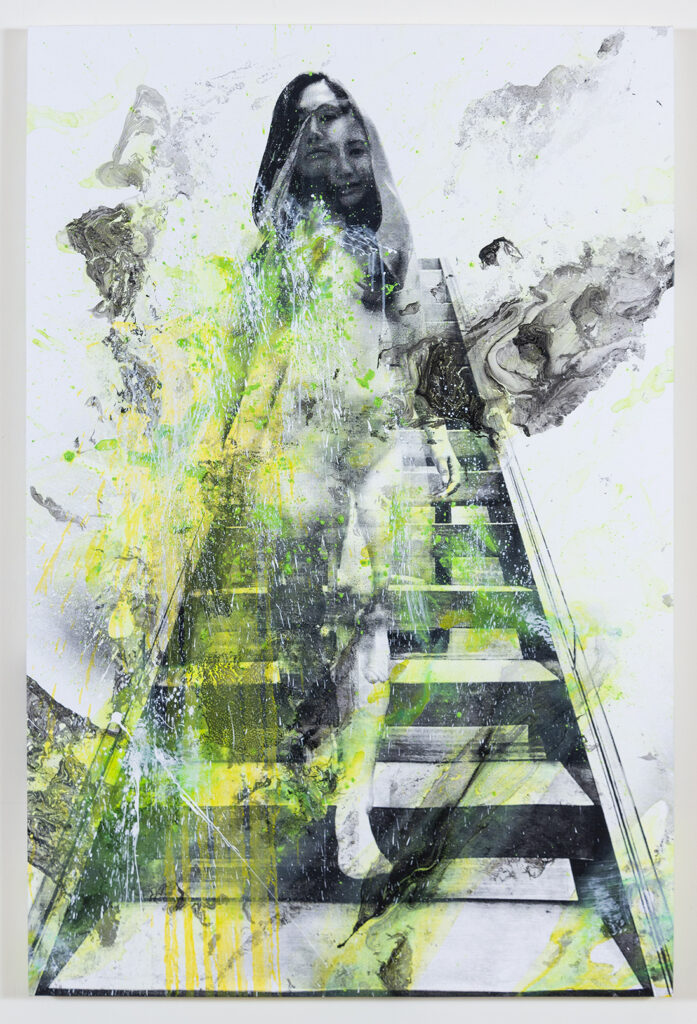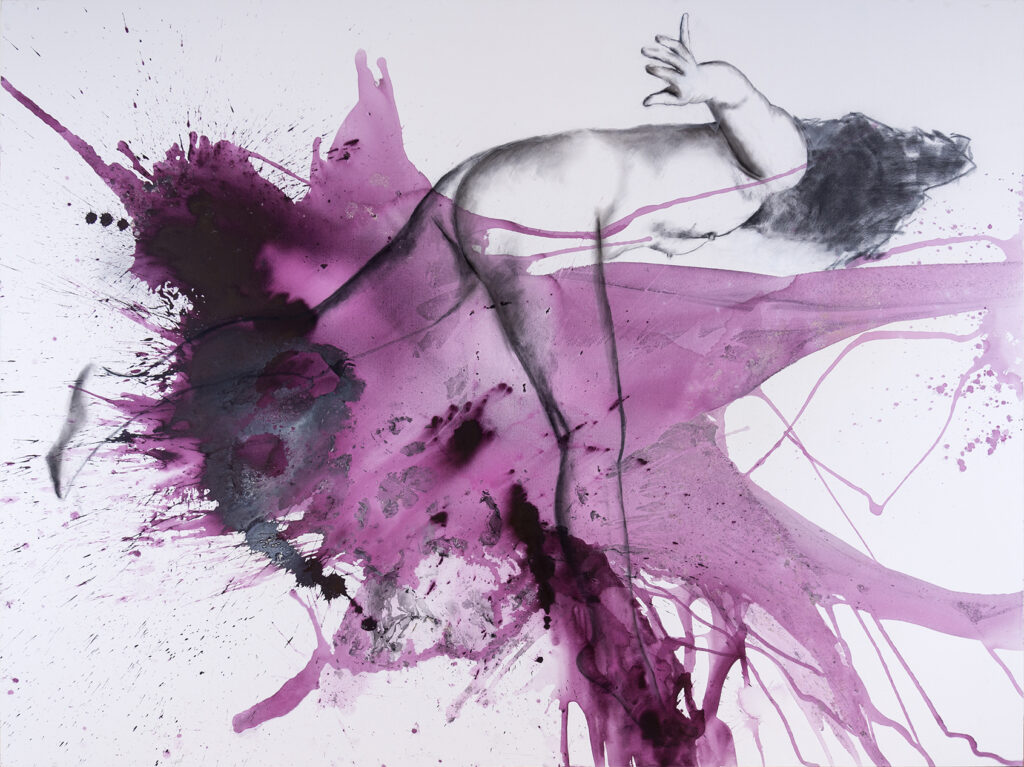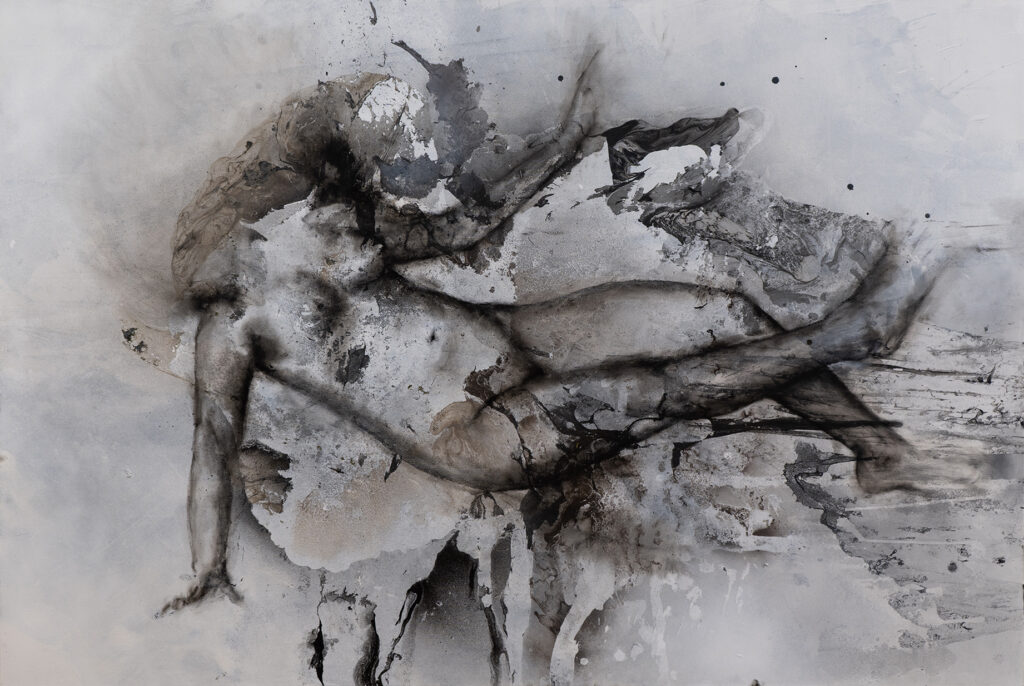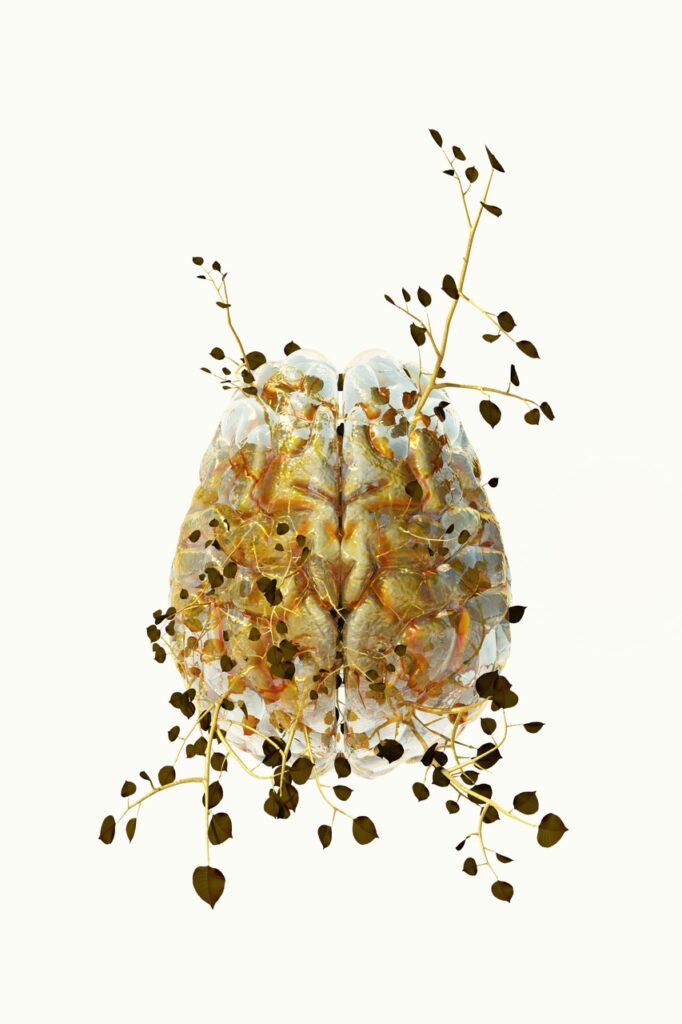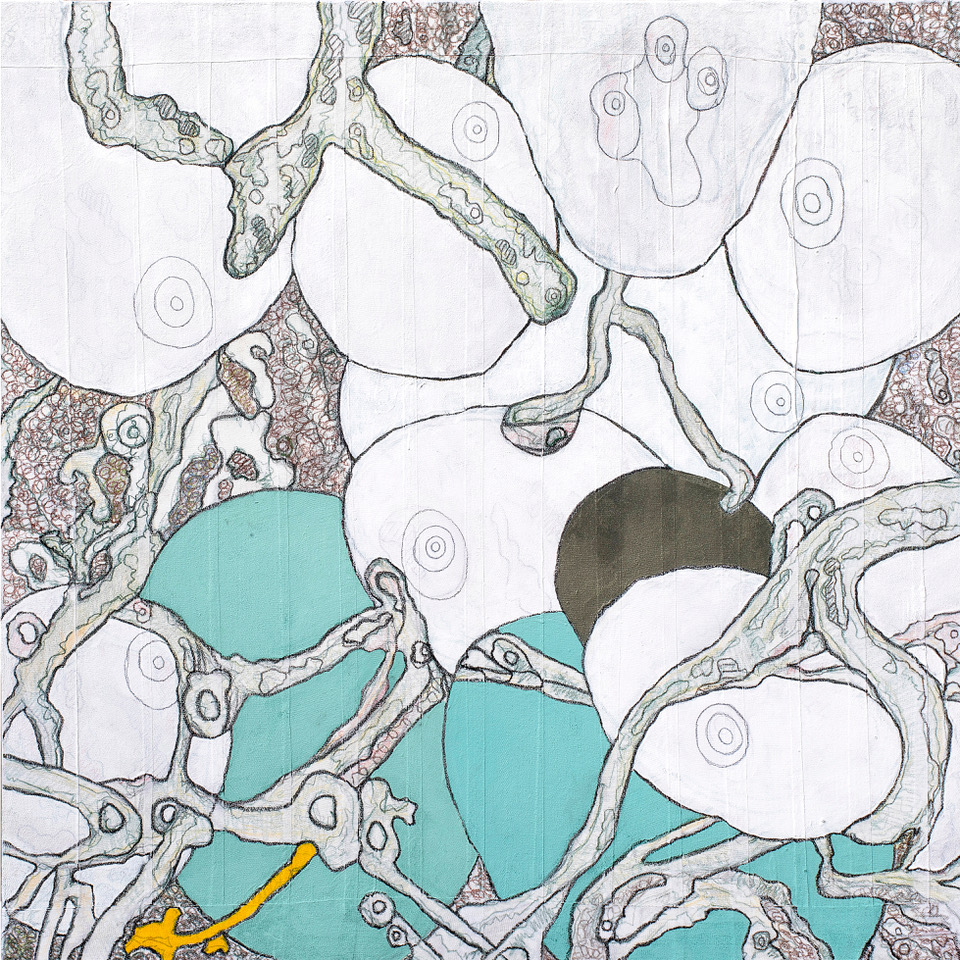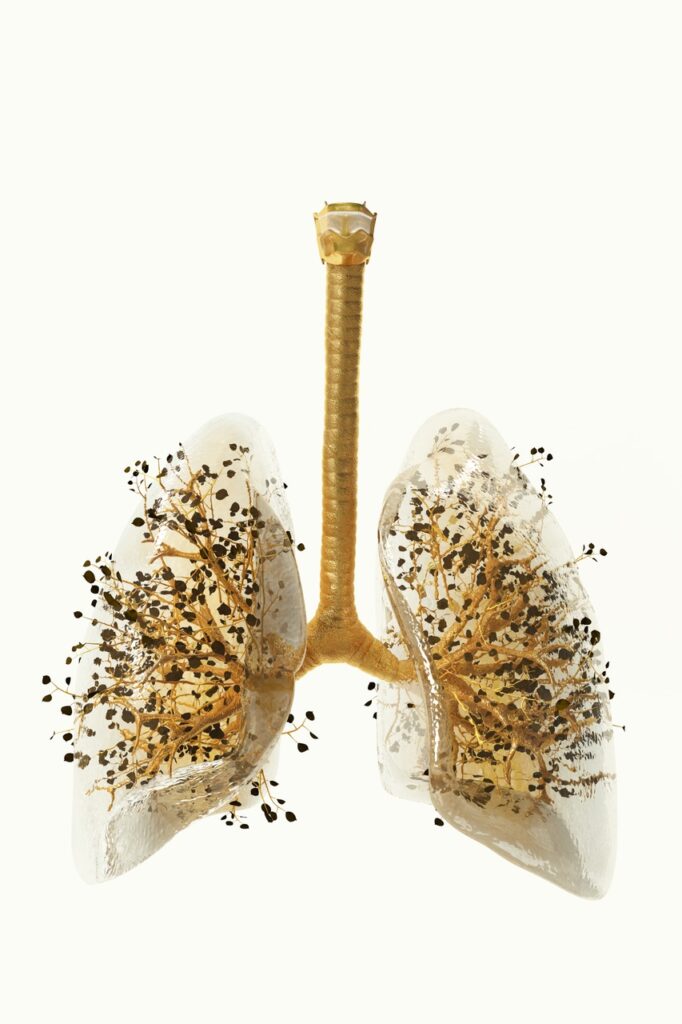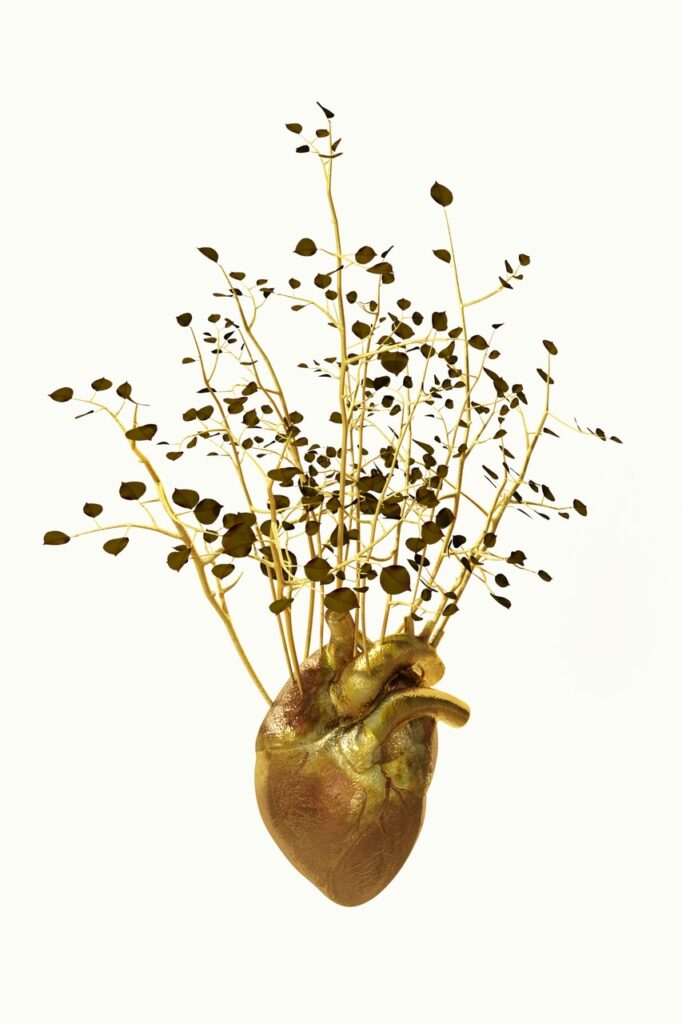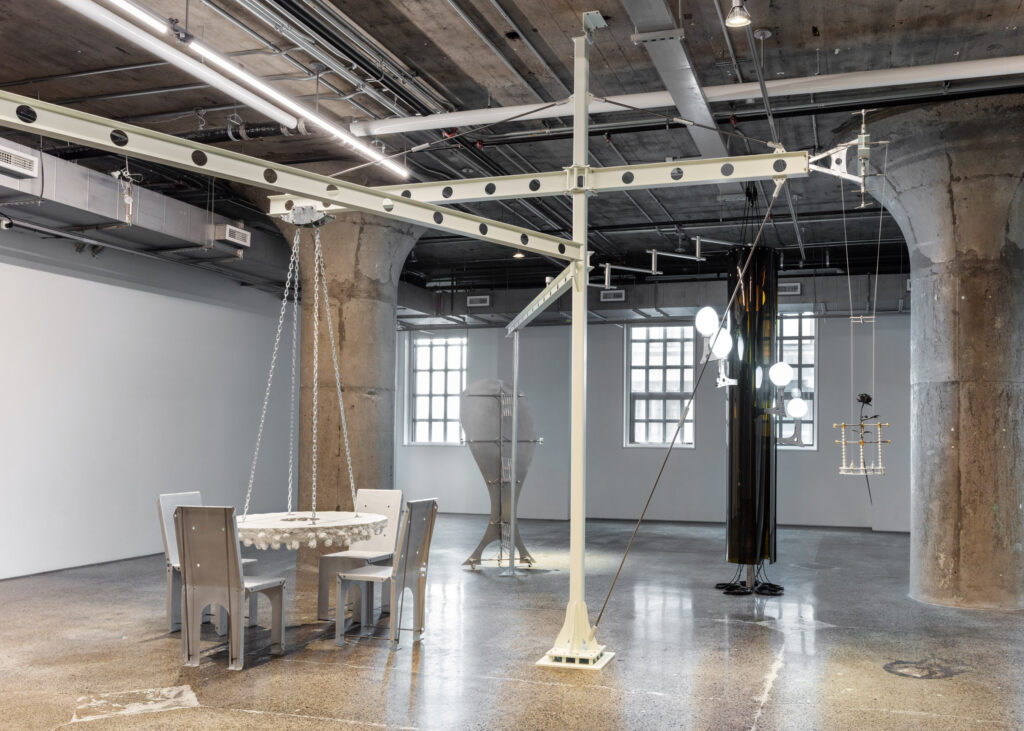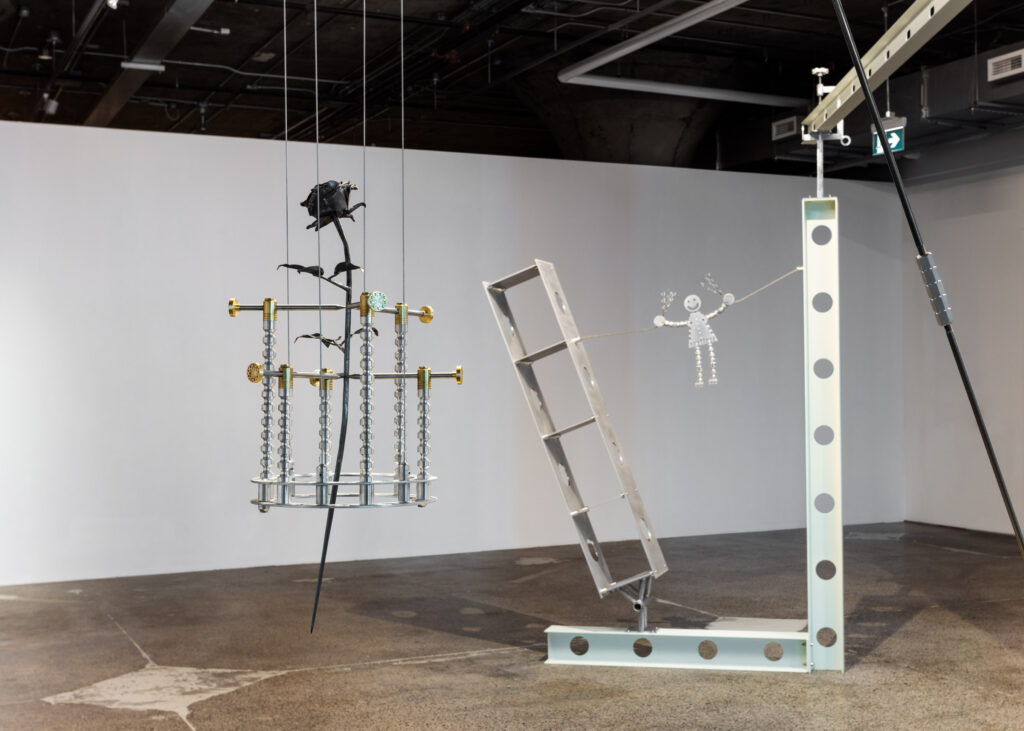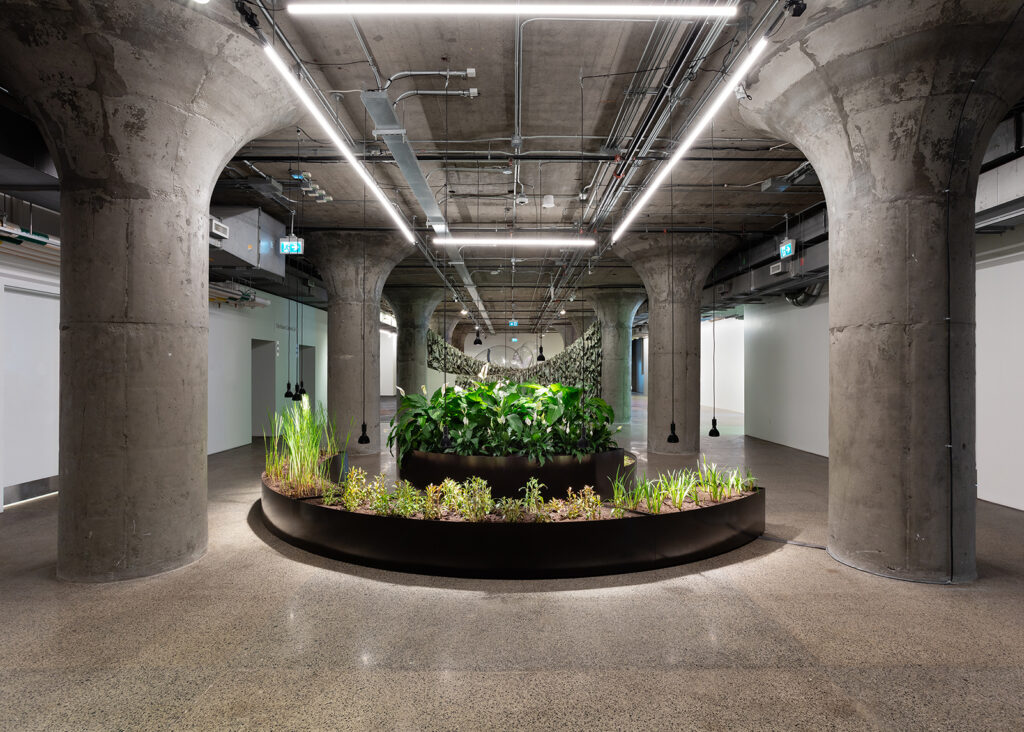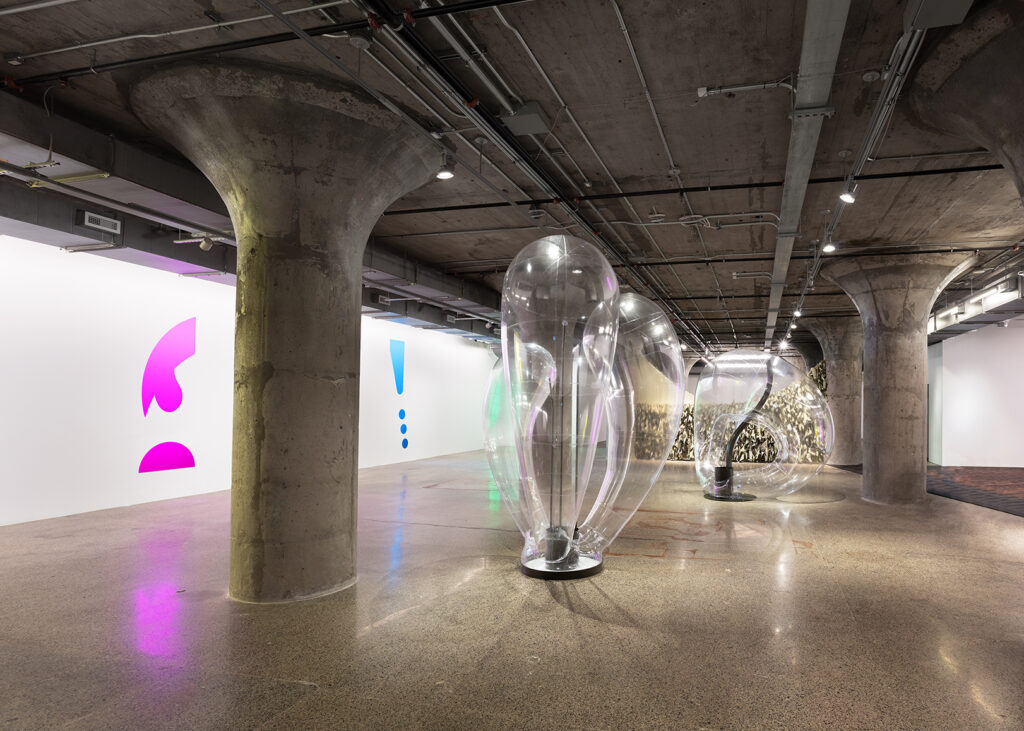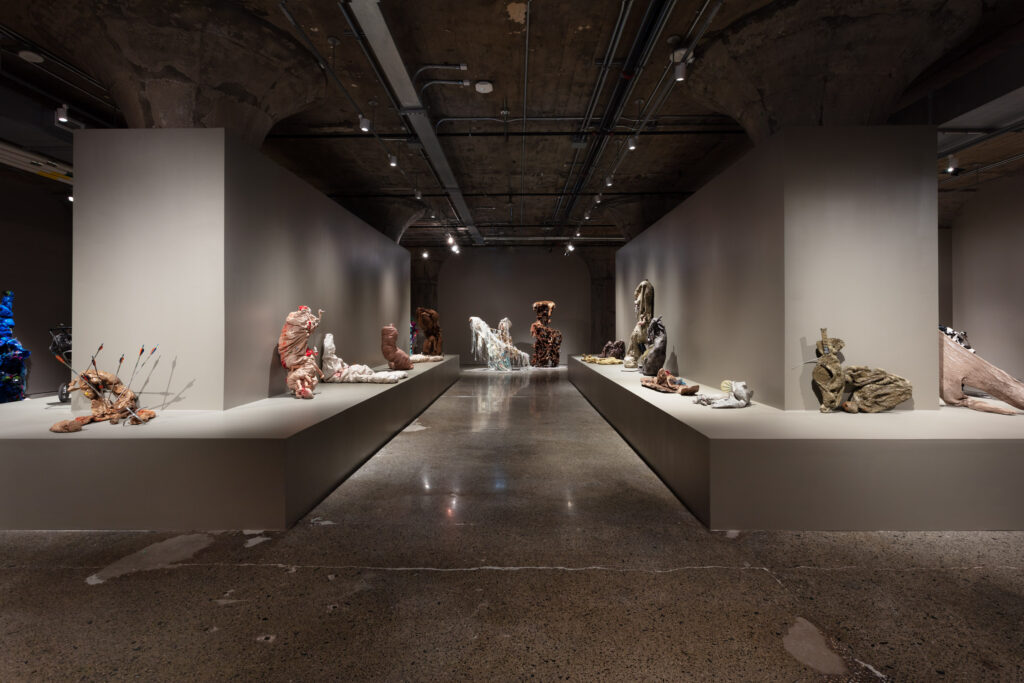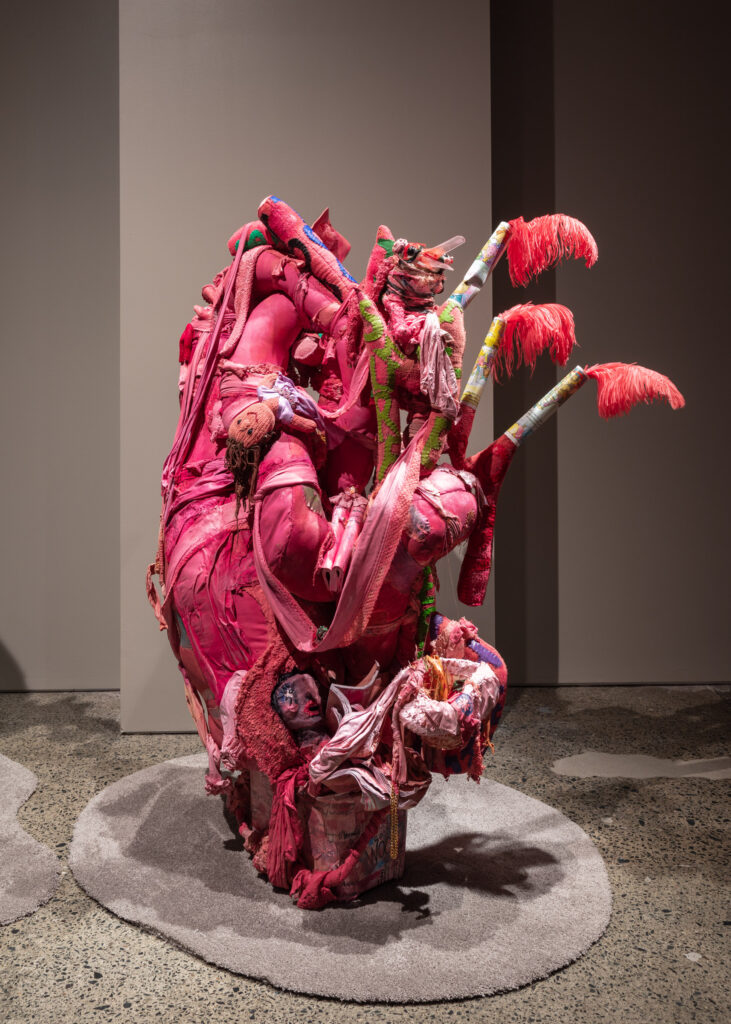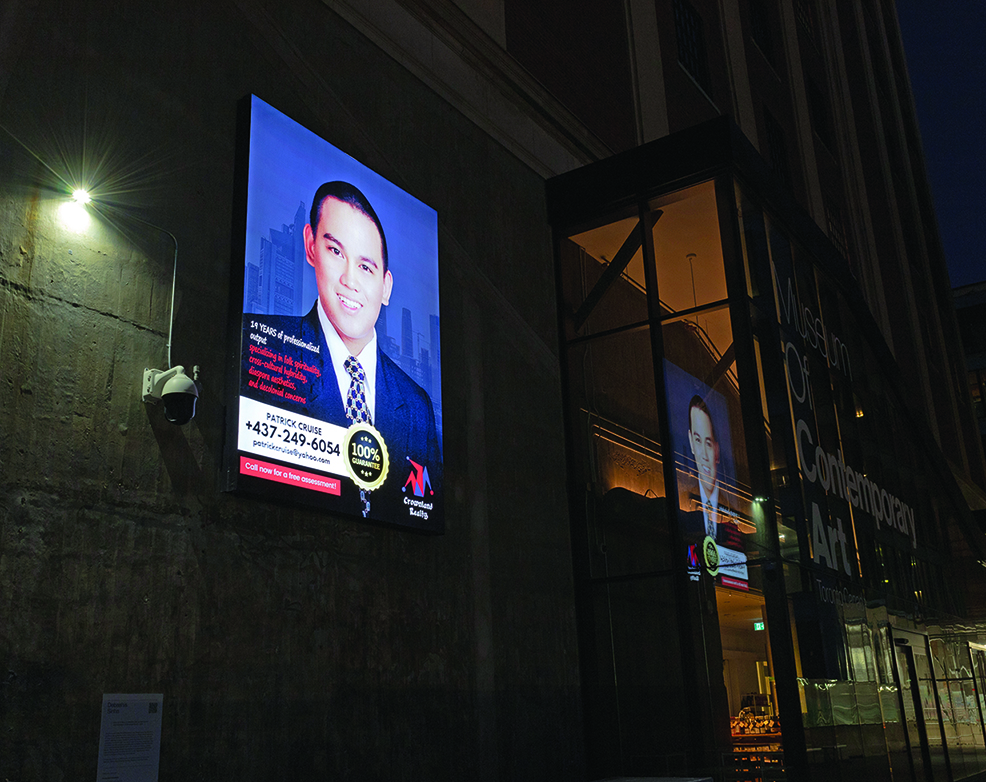by Emese Krunak-Hajagos
Jean-François Bouchard’s exhibition Exile from Babylon at Arsenal Contemporary Art is part of Toronto’s Scotiabank CONTACT Photography Festival. CONTACT is the largest photography festival in the world, showcasing more than 180 exhibitions in the GTA from May to August.
In this solo show, Montreal-born, New York City-based artist Jean-François Bouchard documents a squatters’ camp in the Sonoran Desert in California. People who live here reject modern American society – Babylon as they call it – and are looking for alternative ways of survival in the face of homelessness and addiction, escaping the legal system or pursing libertarian ideals. They live in a very unfriendly land without running water, electricity or garbage removal in tents, shanties, shipping containers, crumbling recreational vehicles and even dens dug into the ground. They know each other by nicknames only, and appear and disappear under strange circumstances. Their search for fulfillment and absolute freedom comes at the cost of great personal sacrifice.

The seemingly straightforward narrative is misleading as the photographs are challenging. The first few images that depict the community in this vastly empty landscape in daylight, are very bright, even blinding as they are presented in lightboxes. These pieces are almost white because of the extreme heat and the absence of any vegetation. The barren land has a few dying trees and the residents are wandering, mostly by themselves or with dogs, seemingly as wild as their owners, surrounded by debris – creating a post-apocalyptic scene. These people’s lives are no longer supported or even tolerated by society, so they are forced to live on the periphery. The photographs are brutally true – but the documentation ends here.

The rest of the photographs in the larger section of the exhibition, depict trees at night – and Bouchard abandons documentation and continues telling the story of the cruel reality metaphorically. The contrast of the bright daylight images and the darkness of the night shots is very dramatic. These mostly dying trees, decorated with thrown out objects and debris that either residents or the harsh desert wind have placed around them and on their branches, create ugly – sometimes even creepy – images that are still beautiful. The metamorphosis trees go through in the night is indeed magical and mesmerizing. What we look at are no longer dying trees with bare branches and useless objects or garbage around them. Everything changes into something different, like in a fairy tale, the creepy becomes eerie.

These dying trees become mystical at night, under the magic touch of sunset or twilight, the starry or stormy sky or the total darkness. Because of the light box technology, both the strong orange of the sunset and the shiny brightness of the stars catch our eyes and for a moment we enjoy their peace. In Tree of Life #1 blue, a night colour, highlights the tree and the rugs flying in the wind. The atmosphere is sad and lonely juxtaposed against the rather beautiful sunset. In Tree of Life #2 the artist lights the tree in white, that reminds us of the pureness of snow. It is already night and the stars are coming up, while the dying sunset lingers on the horizon. Trees always tell us a story about many things. This is an old tree having lived a harsh life in the desert, heavily abused by the strong winds and burdened with debris. It has been badly treated by both nature and humans. A hard life, much like that of the people there.

The absence of people is important in these photographs as the trees are the focal points. Tree of Life #9 is a little bit different with the addition of an elegant cupboard in front of the tree that somewhat modifies the atmosphere. It seems to be twilight; we can see stars but the sky is not dark and a little orange light of sunset lingers. The light coming from the front lights up only the top of the tree but strongly reflects off the glass doors of the cupboard. Where did this furniture come from? Although it has seen better days, it is beautifully crafted and antique. How did it get here and who left it? Surely, like the people who live here, it didn’t deserve this terrible fate.

Trees are very important creatures both in our lives and in myths. We usually associate trees with natural beauty, relaxation, peace — their fresh air nurtures us. In mythology they have a more complex meaning. Some tribes considered them sacred, and even looked on them as gods. They believed that trees could tell stories, see into the future and cause miracles. Old Celtic legends talk about putting a priest in a young tree so the trunk enclosed him in time and fed him with its syrup. The priest became part of the tree, spoke for the tree, creating a sacred communication between nature and human. And, of course, there is the Tree of Life, the symbol of every living thing.
It is also a scientific fact now that trees have a strong communication system and support each other in difficult times, be it natural disaster or illness (Susanne Simard: Finding the Mother Tree, Penguin Random House, 2021). The death of a tree indicates something has gone wrong in their community.

In Bouchard’s photograph the Tree of Life #6, the tree is dead. Similarly, the people living in the Sonora Desert are as good as dead to the American society.
Images are courtesy of the artist and Arsenal Contemporary Art Toronto

![Bice Lazzari, Senza Titolo [Untitled] (Q/435), 1972-3, acrylic on canvas, 82 x 163.2 in. Courtesy of Archivio Bice Lazzari and kaufmann repetto Milan / New York and Richard Saltoun Gallery London / Rome. Photo: Kunning Huang](https://www.dartmagazine.com/wp-content/uploads/2023/06/BLAZ-004-1-copy-1024x524.jpg)
![Bice Lazzari, Sequenza 3 [Sequence 3], 1964, tempera, glue and sand on canvas, 107.3 x 118 in. . Courtesy of Archivio Bice Lazzari and kaufmann repetto Milan / New York and Richard Saltoun Gallery London / Rome. Photo: Kunning Huang](https://www.dartmagazine.com/wp-content/uploads/2023/06/BLAZ-016-copy-1024x916.jpg)
![Bice Lazzari, Senza Titolo [Untitled], 1967, tempera on canvas, 108 x 118 in. Courtesy of Archivio Bice Lazzari and kaufmann repetto Milan / New York and Richard Saltoun Gallery London / Rome. Photo: Kunning Huang](https://www.dartmagazine.com/wp-content/uploads/2023/06/BLAZ-015-1-copy-1024x917.jpg)
![Bice Lazzari, Acrilico n.6 [Acrylic no. 6], 1975, acrylic on canvas, 107.3 in x 118 in. Courtesy of Archivio Bice Lazzari and kaufmann repetto Milan / New York and Richard Saltoun Gallery London / Rome. Photo: Kunning Huang](https://www.dartmagazine.com/wp-content/uploads/2023/06/BLAZ-017-1-copy-1024x917.jpg)
